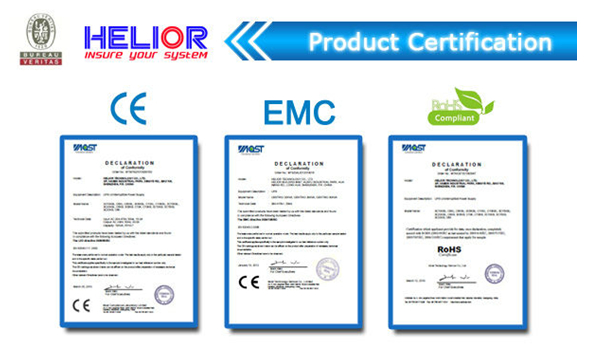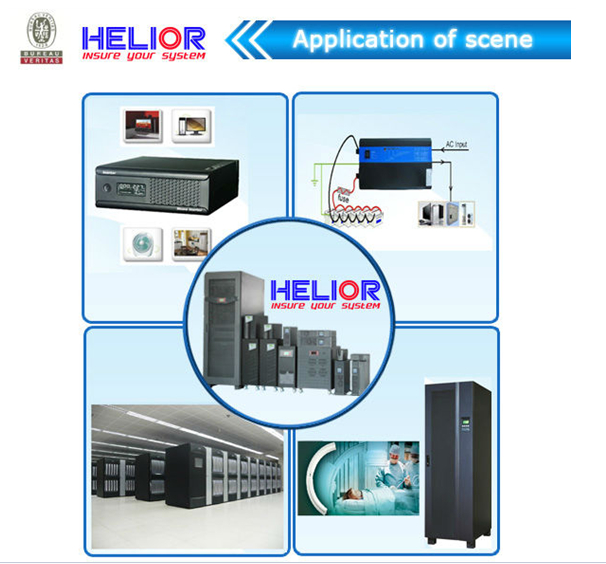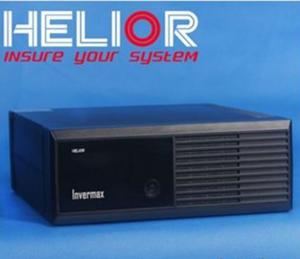Solar Inverter, Best Mppt Inverter Hybrid A
- Loading Port:
- Shanghai
- Payment Terms:
- TT or LC
- Min Order Qty:
- 15 unit
- Supply Capability:
- 1000 unit/month
OKorder Service Pledge
OKorder Financial Service
You Might Also Like
1. Structure of Solar Inverter, Best Mppt Inverter Hybrid A Description
A solar inverter, or PV inverter, or Solar converter, converts the variable direct current (DC) output of a photovoltaic (PV) solar panel into a
utility frequency alternating current (AC) that can be fed into a commercial electrical grid or used by a local, off-grid electrical network. It is a
critical BOS–component in a photovoltaic system, allowing the use of ordinary AC-powered equipment. Solar inverters have special
functions adapted for use with photovoltaic arrays, including maximum power point tracking and anti-islanding protection.
2. Main Features of Solar Inverter, Best Mppt Inverter Hybrid A
• High Frequency inverter
• Rack Tower Design
• Off mode charging inverter
• Full automatic and silent operation
• User selectable for accepting wider input voltage
• Compact size for convenient use and storage
• Built-in 8Amp super charger for up to 100Ah battery
• Small Scale and cost effective inverter for home appliances and office equipment
• Two-steps intelligent charging control to reduce the recharging time
3. Power Inverter with Solar Inverter, Best Mppt Inverter Hybrid A Images


4. Solar Inverter, Best Mppt Inverter Hybrid A Specification
窗体顶端 MODEL窗体底端 |
| INVERMAX 500 | INVERMAX 1000 | INVERMAX 2000 |
CAPACITY | VA/W | 500VA / 300W | 1000VA / 600W | 2000VA / 1280W |
INPUT | Phase | Single | ||
Voltage | 110 / 120VAC or 220 / 230 / 240VAC | |||
Voltage Range | 90 - 145VAC or 170-280VAC ( Narrow Range ) | |||
50-145VAC / 90-280VAC (Wide Range) | ||||
OUTPUT | Phase | Single | ||
Voltage | 120VAC or 230VAC | |||
Voltage Regulation(Batt. Mode) | -0.555555556 | |||
Frequency | 50Hz or 60Hz | |||
Frequency Regulation (Batt. Mode) | +/- 0.1 Hz | |||
Output Waveform (Batt. Mode) | Modified Sinewave | |||
POWER FACTOR | P.F. | 0.6 | ||
BATTERY | Charger Current | 8 Amp + / - 1Amp | 6 Amp + / - 1Amp | 10 Amp + / - 1Amp |
Floating Voltage | 13.7V + / - 0.2V | 27.4V + / - 0.4V | ||
Overcharge Protection | 14.5V +/- 0.3V charger stops and fault | 29V +/- 0.6V charger stops and fault | ||
TRANSFER TIME | Typical | 8ms (Narrow mode) | ||
EFFICIENCY | AC to AC | >95% | ||
DC to AC | >80% | |||
INDICATOR | AC Mode | Green LED lighting | ||
Battery Mode | Yellow LED lighting | |||
Battery Charging Mode | Green LED flashing every 2 seconds | |||
Overload | Red LED flashing every 0.5 second | |||
Fault | Red LED lighting | |||
AUDIBLE ALARM | Low Battery at Battery Mode | Sounding every 2 seconds | ||
Overload | Sounding every 0.5 second | |||
Fault | Continuously sounding | |||
PROTECTION | Full Protection | Deep Discharge, Overcharge, Overload protection, Short Circuit, Battery Shot, Over Voltage and Under Voltage | ||
PHYSICAL | Dimension (DxWxH) mm | 224 X 255 X 80 | ||
Net Weight (kgs) | 1.7 for 500VA / 300W | 2.5 | ||
ENVIRONMENT | Operating Environment | 0~40 Degrees Centigrade, 0~90% relative humidity (non-condensing) | 0~50 Degrees Centigrade | |
Noise Level | Less than 45dB 窗体底端 | |||
5. FAQ of Solar Inverter, Best Mppt Inverter Hybrid A
Q1:Can we visit your factory?
A1:Sure,welcome at any time,seeing is believing.
Q2:Which payment terms can you accept?
A2:T/T,L/C,Moneygram,Paypal are available for us.
- Q:How does a three-phase solar inverter differ from a single-phase inverter?
- A three-phase solar inverter differs from a single-phase inverter in terms of the number of input and output phases it can handle. While a single-phase inverter can only handle a single-phase input and output, a three-phase inverter is designed to handle three-phase input and output. This allows for a more efficient and balanced distribution of power in three-phase electrical systems, making three-phase inverters suitable for larger solar installations or commercial applications.
- Q:Can a solar inverter be used with smart home systems?
- Yes, a solar inverter can be used with smart home systems. Many modern solar inverters are designed to integrate with smart home technology, allowing homeowners to monitor and control their solar energy production and consumption through their smart devices. This integration enables better management of energy usage, optimization of solar power generation, and the ability to remotely monitor and adjust the inverter settings for improved efficiency and convenience.
- Q:How does a solar inverter handle power factor optimization?
- A solar inverter handles power factor optimization by ensuring that the power generated by the solar panels is synchronized with the grid's voltage and frequency. It adjusts the power factor by actively controlling the flow of current between the solar panels and the grid, allowing for efficient power transfer and minimizing reactive power consumption.
- Q:Can a solar inverter be upgraded or expanded?
- Yes, a solar inverter can be upgraded or expanded. Upgrades may involve adding new features or improving the efficiency of the existing inverter. Expansion typically refers to increasing the capacity of the inverter to accommodate additional solar panels. However, the extent to which an inverter can be upgraded or expanded varies depending on the specific model and manufacturer.
- Q:How does a solar inverter affect the overall efficiency of a solar system?
- A solar inverter plays a crucial role in the overall efficiency of a solar system. It converts the direct current (DC) generated by solar panels into alternating current (AC) that can be used to power household or commercial appliances. By ensuring optimal conversion efficiency and minimizing power losses during this process, a high-quality solar inverter can significantly impact the overall efficiency of a solar system.
- Q:What is the role of a transformer in a solar inverter?
- The role of a transformer in a solar inverter is to convert the direct current (DC) power generated by the solar panels into alternating current (AC) power that can be used by household appliances and fed back into the electrical grid. The transformer helps to step up or step down the voltage as necessary and provides isolation between the solar panels and the grid, ensuring safe and efficient power transmission.
- Q:Can a solar inverter be integrated with a smart home system?
- Yes, a solar inverter can be integrated with a smart home system. This integration allows for monitoring and controlling the solar energy production, as well as optimizing energy usage and managing the overall efficiency of the system.
- Q:Can a solar inverter be used with a solar-powered food dehydrator?
- Yes, a solar inverter can be used with a solar-powered food dehydrator. A solar inverter is responsible for converting the direct current (DC) produced by solar panels into alternating current (AC) that can be used to power electrical devices. Since a solar-powered food dehydrator typically requires AC power, a solar inverter is necessary to convert the DC power generated by the solar panels into the appropriate form for the dehydrator to function.
- Q:What are the potential risks of overcharging a battery connected to a solar inverter?
- Overcharging a battery connected to a solar inverter can lead to several potential risks. Firstly, it can cause excessive heat buildup in the battery, which can lead to reduced battery life and even damage the internal components. Secondly, overcharging can cause electrolyte leakage or gas buildup within the battery, increasing the risk of explosion or fire hazard. Additionally, overcharging can result in the release of toxic gases, such as hydrogen, which can be harmful if not properly ventilated. Finally, overcharging can also have an adverse effect on the overall efficiency of the solar system, as excess energy is wasted during the charging process.
- Q:Can a solar inverter be used in off-grid systems?
- Yes, a solar inverter can be used in off-grid systems. Off-grid systems rely on solar panels to generate electricity and store it in batteries for use when the sun is not shining. A solar inverter is necessary to convert the direct current (DC) produced by the solar panels into alternating current (AC) that is usable by common household appliances.
1. Manufacturer Overview |
|
|---|---|
| Location | |
| Year Established | |
| Annual Output Value | |
| Main Markets | |
| Company Certifications | |
2. Manufacturer Certificates |
|
|---|---|
| a) Certification Name | |
| Range | |
| Reference | |
| Validity Period | |
3. Manufacturer Capability |
|
|---|---|
| a)Trade Capacity | |
| Nearest Port | |
| Export Percentage | |
| No.of Employees in Trade Department | |
| Language Spoken: | |
| b)Factory Information | |
| Factory Size: | |
| No. of Production Lines | |
| Contract Manufacturing | |
| Product Price Range | |
Send your message to us
Solar Inverter, Best Mppt Inverter Hybrid A
- Loading Port:
- Shanghai
- Payment Terms:
- TT or LC
- Min Order Qty:
- 15 unit
- Supply Capability:
- 1000 unit/month
OKorder Service Pledge
OKorder Financial Service
Similar products
New products
Hot products
Hot Searches
Related keywords
































